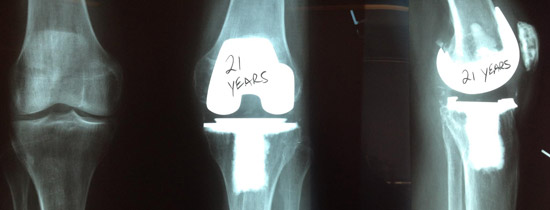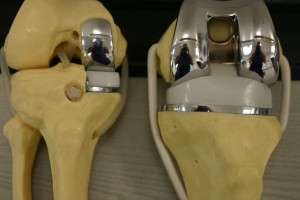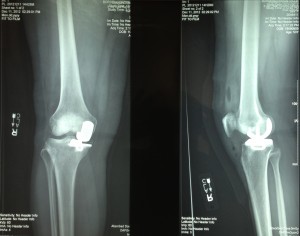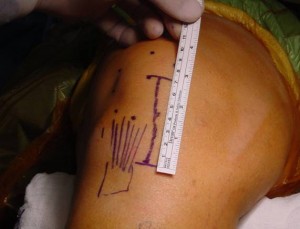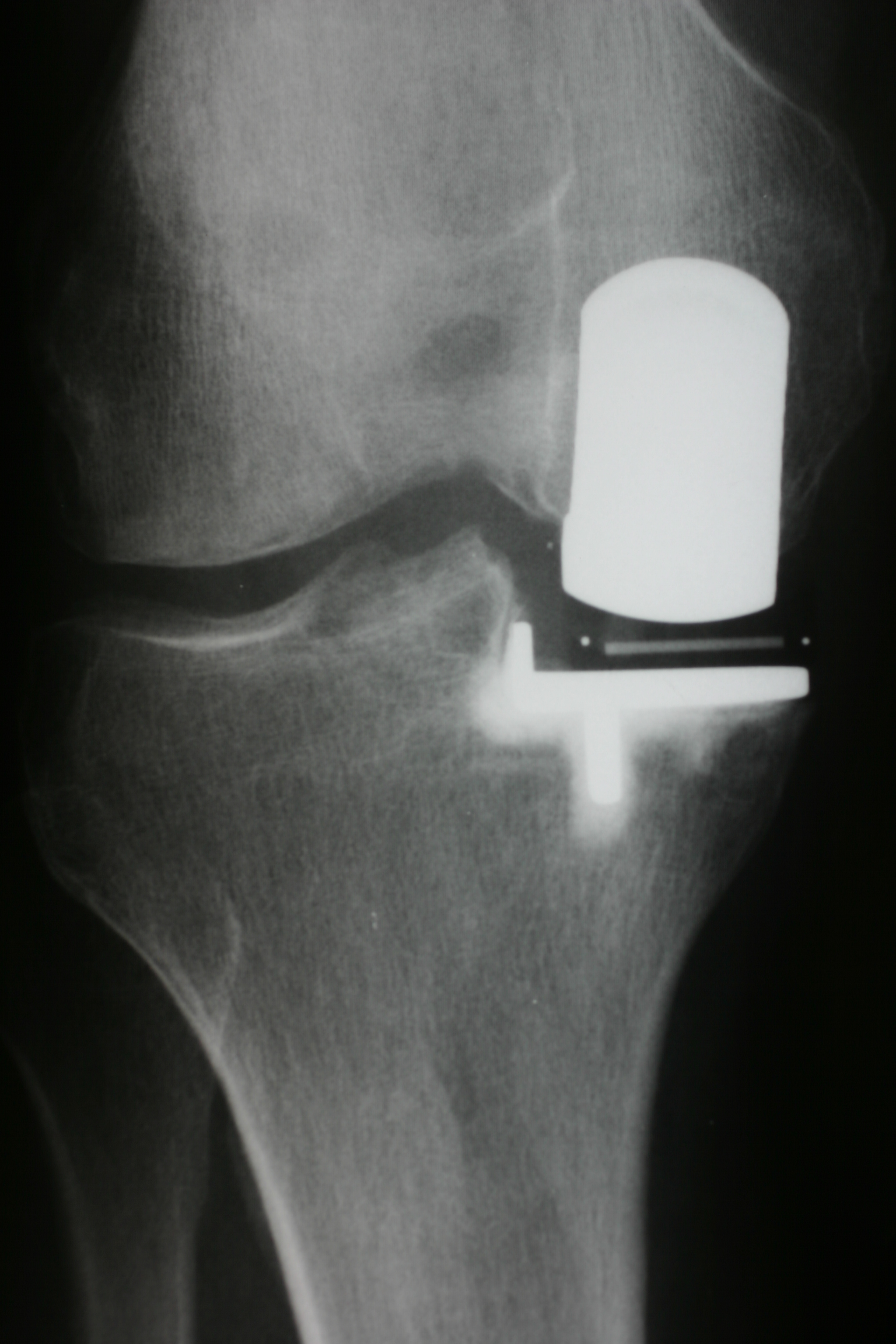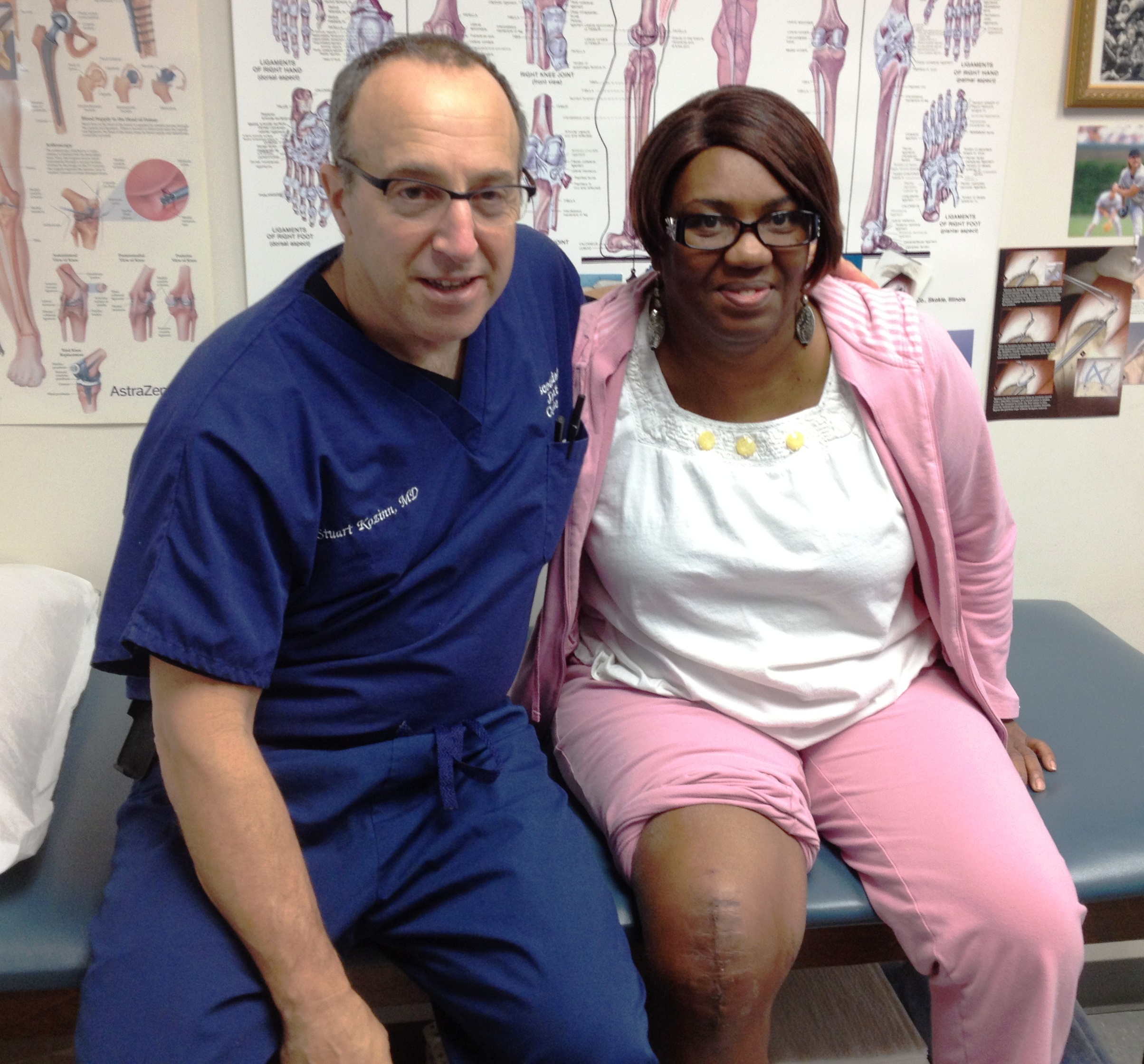Partial Knee Replacement (aka Unicondylar Knee Replacement or Uni Knee) Partial Knee Replacement is a minimally invasive alternative to traditional knee replacement. Only the damaged portion of the knee is replaced rather than the entire knee. Usually this is the inner side of the knee, which wears out first in most cases of varus osteoarthritis ( the inner edge of the knee is worn out and the leg looks “bow -legged”). Partial knees are a smaller procedure which allows a more rapid recovery than a full knee replacement. Many patients will do very well with a partial knee,and recover much faster! Click this link to watch our video on partial knee replacement -http://youtu.be/CMtUis-wFQg
A smaller incision is used to place the device and the underlying muscles are minimally disrupted. Rehabilitation is much faster and patients may return to work and activities much faster. Usually my UNI patients do not need to do formal physical therapy, and do well with home exercises only. Some patients choose to go home the same day as surgery, but most stay overnight in the hospital. Patients are walking on our Total Joint Floor ( 6west at SHC Osborn) about 2 hours after their surgery, or when the spinal anesthesia wears off. A femoral nerve block is used for pain relief, and the pain is not bad for the first 24 hours until the block wears off. By then, the body and mind have had a chance to gradually adapt to the new situation, and the pain is controllable with oral pain meds. We try to limit the overall amount of narcotics, as they have side effects that lead to other problems (constipation, nausea, lethargy, and even blood clots from immobility). We do use a multi-modality pain management approach – using non-narcotic drugs such as Toradol, tramadol, tylenol, Celebrex and Motrin, often all together! They work very well that way!!! To Watch our introductory video on partial knee replacement -click here!
The Oxford mobile bearing Partial Knee Replacement ( Biomet corporation ) has proven to be as long lasting as traditional knee replacement. Long term durability in published studies is near equal for Oxford Unis and Total knee replacements at around 20 years survivorship on average for each procedure. Typically the partial replacement knee feels more like a “normal knee” after surgery because the underlying quadriceps muscle is not disrupted and the ACL and PCL ligaments remain intact. These ligaments bring “proprioceptive” nerve endings to the inside of the knee. During my Fellowship at Harvard, we did a study using patients that had one knee replaced with a total knee, and one with a partial knee. Patients preferred the partial knee 75% of the time because it felt like a more natural knee.
Most of my patients with an Oxford uni knee do not require formal physical therapy after surgery and they do exercises at home or the local health club. The pain is much less severe after the partial knee replacement so less pain medication is required. Patients can go home after one night in the hospital and can fully weight bear ASAP after the surgery. We have some patients walking in the recovery room if we are waiting for a bed to open up on the floor. Patients walk initially with a walker because of the femoral nerve block ( which causes temporary weakness in the quadriceps muscle), then they switch to a cane for safety reasons, but most walk without any support after a week.
Dr. Kozinn was first trained in Partial Knee Replacement technique and theory by Dr. Richard Scott at Harvard Medical School during his joint replacement Fellowship. Dr. Scott is the most famous partial knee replacement surgeon in the world. Dr. Kozinn and Dr. Scott together wrote the now classic scientific article on the subject of Partial Knee Replacement in the Journal of Bone and Joint Surgery. This article is still referenced by most orthopedic surgeons as the authority on indications for the Partial Knee Replacement procedure. Dr. Kozinn still lectures to other orthopedists on partial knee replacement at international orthopedic seminars.
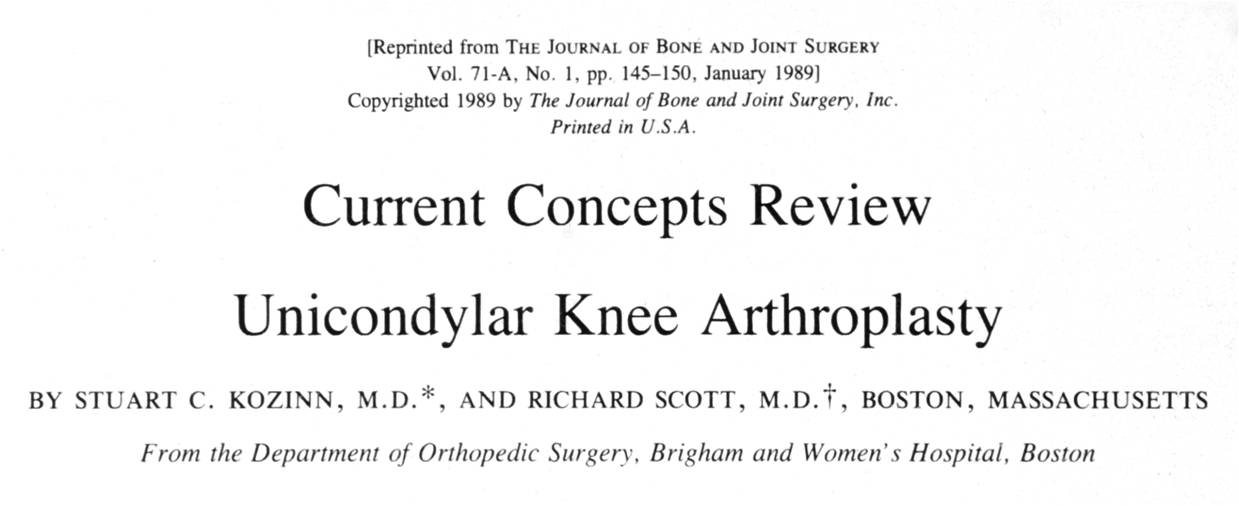
Dr. Kozinn wrote this authoritative article in the Journal of Bone and Joint Surgery after his Fellowship at Harvard Medical Center
Dr. Kozinn has been performing partial joint replacement at the Scottsdale Total Joint Center for over 25 years in Scottsdale, Arizona. He is presently the Medical Director of Joint Replacement Services at Scottsdale Healthcare Osborn and serves as Chief of Surgery at Scottsdale Healthcare Osborn.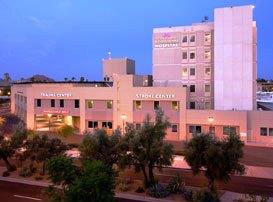 Dr.Kozinn completed a joint replacement fellowship at Harvard University after a five year Residency in orthopedic surgery at the Hospital for Special Surgery (HSS) in New York. HSS is the consistently rated the best Orthopedic Training Program in the world by US News and World Report magazine. Dr. Kozinn is included in their list of Best Orthopedic Doctors in the USA. Read about Dr. Kozinn and Partial Knee Replacement at www.ScottsdaleJointCenter. com and www.Facebook.com/Total Knee Replacement
Dr.Kozinn completed a joint replacement fellowship at Harvard University after a five year Residency in orthopedic surgery at the Hospital for Special Surgery (HSS) in New York. HSS is the consistently rated the best Orthopedic Training Program in the world by US News and World Report magazine. Dr. Kozinn is included in their list of Best Orthopedic Doctors in the USA. Read about Dr. Kozinn and Partial Knee Replacement at www.ScottsdaleJointCenter. com and www.Facebook.com/Total Knee Replacement




